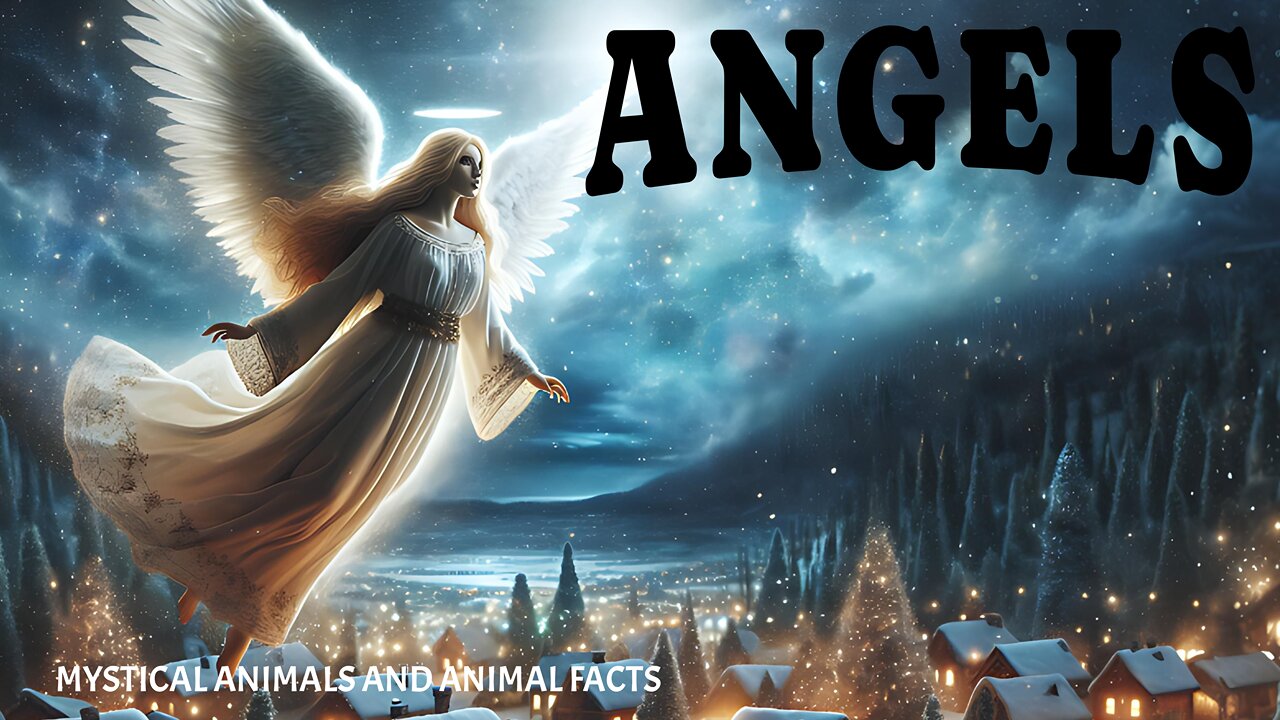Premium Only Content

Angels in religious and spiritual traditions - Mini-documentary
Shirts and more
Designs Redbubble
https://www.redbubble.com/people/ReneMM/shop?asc=u
Spreadshirt.at
https://www.spreadshirt.at/shop/user/renemm/?srEdit=pa#?affiliateId=1257693
Spreadshirt.com
https://www.spreadshirt.com/shop/user/renemm/?srEdit=pa#?affiliateId=11625
Shirtee.at
https://www.shirtee.com/de/catalogsearch/result/index/designer_id/112048/all_stores/
1/
Pictures
https://fineartamerica.com/profiles/rene-mitterlehner
Angels are anchored in numerous religious and spiritual traditions and are described as mediators between the divine and the human sphere. Their depiction varies depending on the cultural and theological context, but common basic characteristics can be identified. In monotheistic religions such as Judaism, Christianity and Islam, angels are understood as created, spiritual beings that are subordinate to the divine will and act as messengers, servants or executors of higher orders. The Hebrew Bible often mentions angels as bearers of divine messages, as in the case of the three men who visit Abraham or the angel who shows Jacob a ladder to heaven in a dream. In Christianity, angels play a central role in key events such as the annunciation to Mary by the archangel Gabriel or the resurrection of Christ, where angels act as witnesses to the empty tomb. Islam describes angels as servants of Allah created from light, who have no freedom of choice of their own and only carry out God's commands, such as Gabriel (Jibril), who revealed the Koran to the Prophet Mohammed. Angelic hierarchies, as developed in Christian angelology in particular, classify angels into different orders, including seraphim, cherubim and thrones in the highest triad, followed by dominions, powers, authorities, principalities, archangels and finally guardian angels. Seraphim are often depicted as fiery beings with six wings that circle directly around the divine throne and praise its holiness, while cherubim are traditionally seen as guardians of sacred spaces or objects, such as paradise after the fall of man or the Ark of the Covenant. Thrones symbolise divine justice and in some interpretations bear the throne of God himself. The idea of angels as winged beings is derived from biblical visions, for example in Isaiah or Ezekiel, whereby wings emphasise both their speed in transmitting divine orders and their belonging to the transcendent sphere. However, their appearance can also be different: In the Old Testament, for example, angels are sometimes initially described as ordinary people who only reveal their true nature in the course of the encounter. Angels act not only as messengers, but also as protectors of individuals or communities, as in Psalm 91, which speaks of angels guarding the faithful in all their ways. In the Book of Daniel, Archangel Michael is mentioned as the heavenly defender of the people of Israel, a role that is expanded in Christianity to leading the heavenly hosts against satanic powers. Islam emphasises the role of angels as recorders who document every deed of a person, as well as companions in death who guide the soul into the afterlife. In many traditions, angels are also involved in eschatological events, be it at the Last Judgement, where they blow trumpets or separate souls, or in the Revelation of John, where they bring plagues upon the earth. Angels were discussed philosophically in the Middle Ages, for example by Thomas Aquinas, who analysed their spiritual nature, intelligence and freedom of will, but emphasised their incorporeality and subordination to God. Angels differ from other supernatural beings such as demons, which are often interpreted as fallen angels, or from nature spirits, which are regarded as independent entities in polytheistic religions. In Eastern Orthodoxy, the worship of angels is cultivated as part of liturgical practice, while Reformation movements are more reserved about their role in favour of a direct relationship with God. Outside the Abrahamic religions, angel-like beings can be found in Zoroastrianism, where Amesha Spentas function as divine aspects, or in Hinduism, where devas are described as light-filled celestial beings. Mystical currents such as the Kabbalah integrate angels into complex systems of divine emanations, with each angel embodying certain sefirot (divine attributes). In art history, angels have characterised sacred art as motifs, from Byzantine mosaics to Renaissance paintings, whereby their depiction has always followed theological guidelines, such as the ban on painting angels in a worshipful posture in order to avoid idolatry. Despite different emphases in different epochs and belief systems, the core function of angels remains as mediators of the sacred, as an expression of divine care and as part of an ordered cosmic hierarchy that connects the universe with the transcendent.
-
 24:42
24:42
James Klüg
3 days agoAnti-Trump Protester HITS Grandma Thinking She’s With Us
81510 -
 2:18:46
2:18:46
Tucker Carlson
9 hours agoTucker Carlson Interviews Nick Fuentes
122K558 -
 2:06:42
2:06:42
FreshandFit
10 hours agoCharleston White Addresses The Backlash From His Charlie Kirk Comments
337K76 -
 1:34:52
1:34:52
Badlands Media
15 hours agoBaseless Conspiracies Ep. 156: The ADL Files – Spies, Lies & the Leo Frank Legacy
84K37 -
 2:04:29
2:04:29
Inverted World Live
10 hours ago700 Scientists and Faith Leaders Warn About Super-Intelligent AI, "Time is Running Out" | Ep. 130
83.7K13 -
 2:50:47
2:50:47
TimcastIRL
9 hours agoFOOD STAMPS OVER, Ending Nov 1, Food RIOTS May Spark Trump INSURRECTION ACT | Timcast IRL
230K129 -
 4:46:23
4:46:23
Drew Hernandez
18 hours agoCANDACE OWENS CALLS CHARLIE KIRK STAFF INTO QUESTION?
45.8K47 -
 47:03
47:03
Barry Cunningham
11 hours agoPRESIDENT TRUMP MEETS WITH THE PRIME MINISTER OF JAPAN!! AND MORE NEWS!
62K31 -
 1:18:29
1:18:29
Flyover Conservatives
1 day agoThe Dollar Devaluation Playbook: Gold, Bitcoin… and the “Genius Act” - Andy Schectman | FOC Show
53.6K5 -
 7:10:35
7:10:35
SpartakusLIVE
11 hours agoWZ Tonight || Battlefield 6 BATTLE ROYALE Tomorrow!
56.5K1